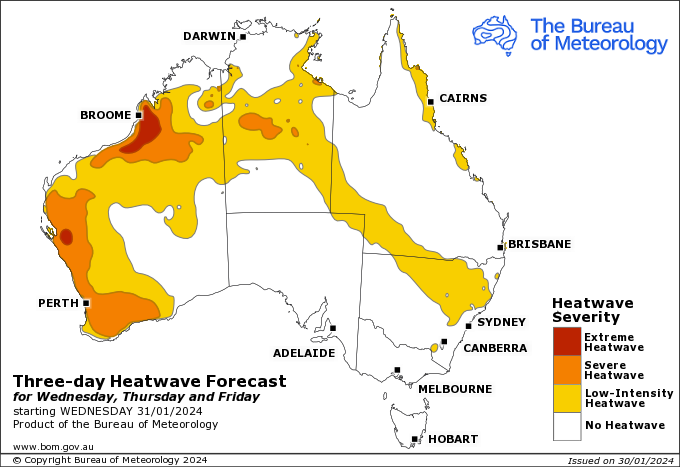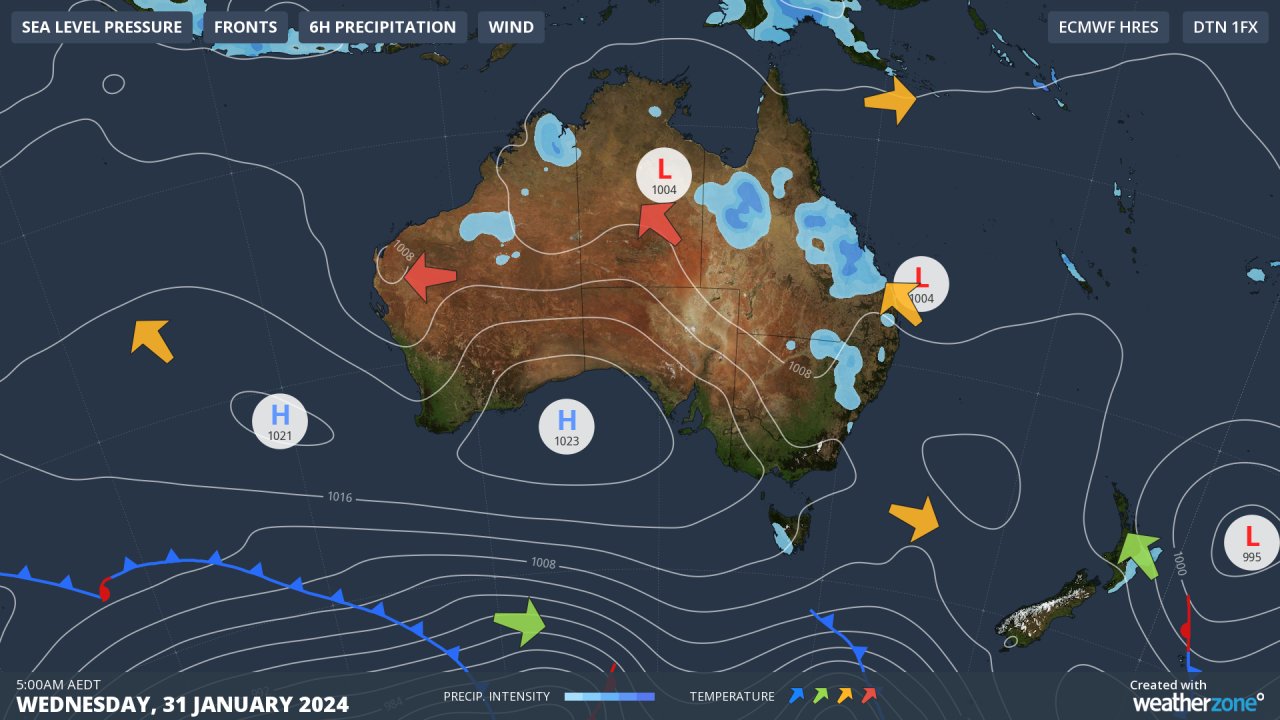Be grateful if you’re lucky enough to be working indoors in air conditioning for the rest of the working week in Perth, as temps are set to keep sizzling until the weekend.
This Wednesday is day two of a four-day heatwave in western and southwestern WA, with Perth heading for a top of 39°C this Wednesday, followed by 40°C on Thursday, then 37°C on Friday, before a southwesterly change cools things down a little by Saturday afternoon.

Image: That heat will start spreading east in coming days. Source: BoM.
Even before the current heatwave, Perth was having a hot summer with max temps in both December and January averaging around half a degree above the long-term average.
Perth in Jan: More than five degrees of difference
Eastern states readers may be unaware that Perth’s average maximum temperatures are already much hotter than the eastern capitals in summer. For example:
- Sydney’s average Jan max is 26°C
- Melbourne’s average Jan max is 25.9°C
- Perth’s average Jan max is 31.4°C
Partly this reflects the lack of genuinely cool days in Perth, when a strong southerly drops temps dramatically.
For example, Perth’s lowest maximum in January 2024 was 26.8°C while Sydney, Melbourne, Adelaide and Canberra all had days when the max was restricted to the low 20s.
Perth also tends to get several days of heat back-to-back more frequently than cities like Sydney or Melbourne, where a spell of one or two extreme heat days is more common than a longer stretch.

Perth heatwaves typically happen when a high parks itself over the Bight and the classic pattern of summer easterly winds sets in, dragging hot air from the interior to southwest WA.
That’s the pattern you can see on today’s synoptic chart.
Be sure to check the latest fire danger info at Emergency WA and of course remember to check the latest weather warnings on the Weatherzone warnings page.






